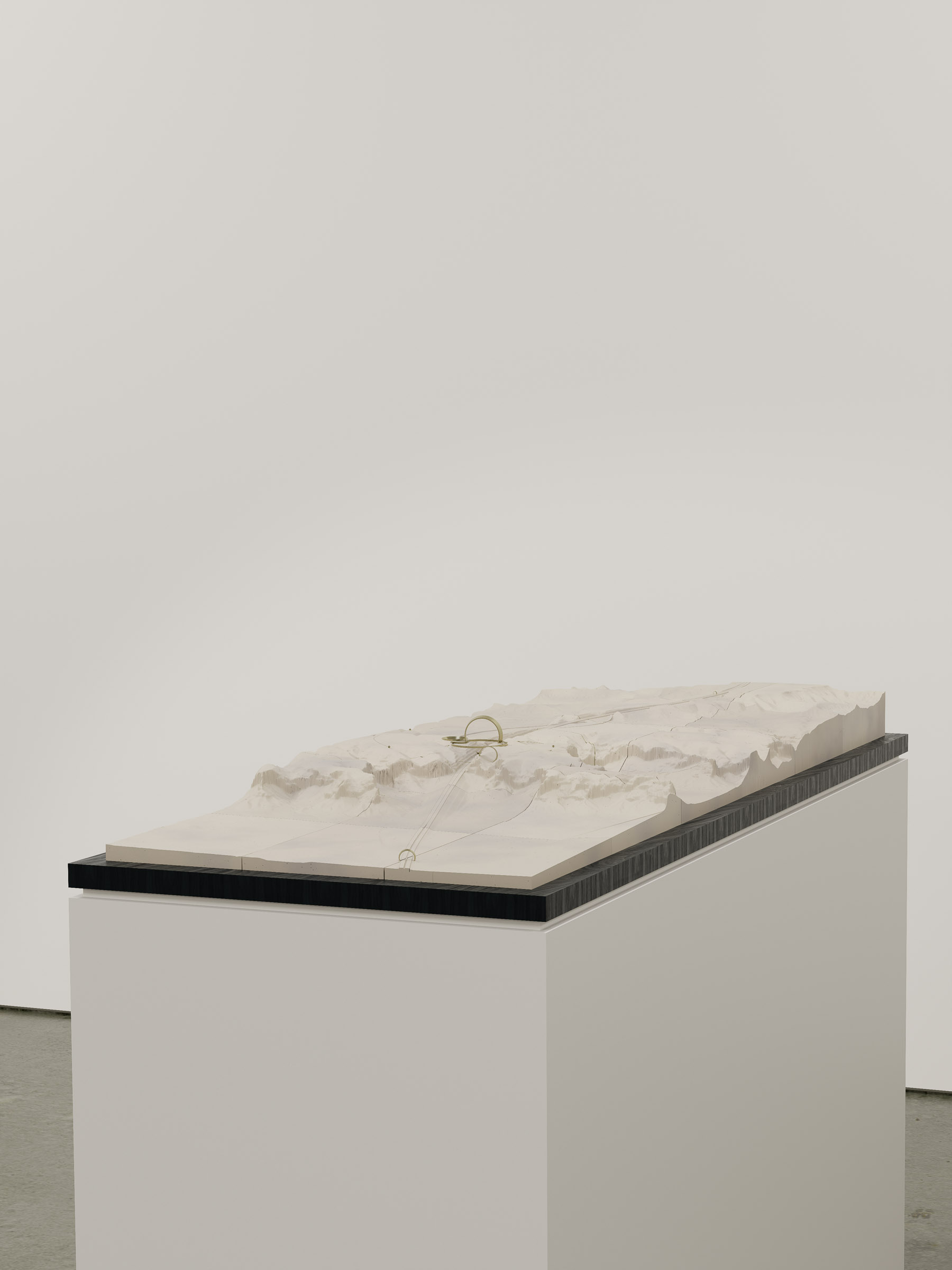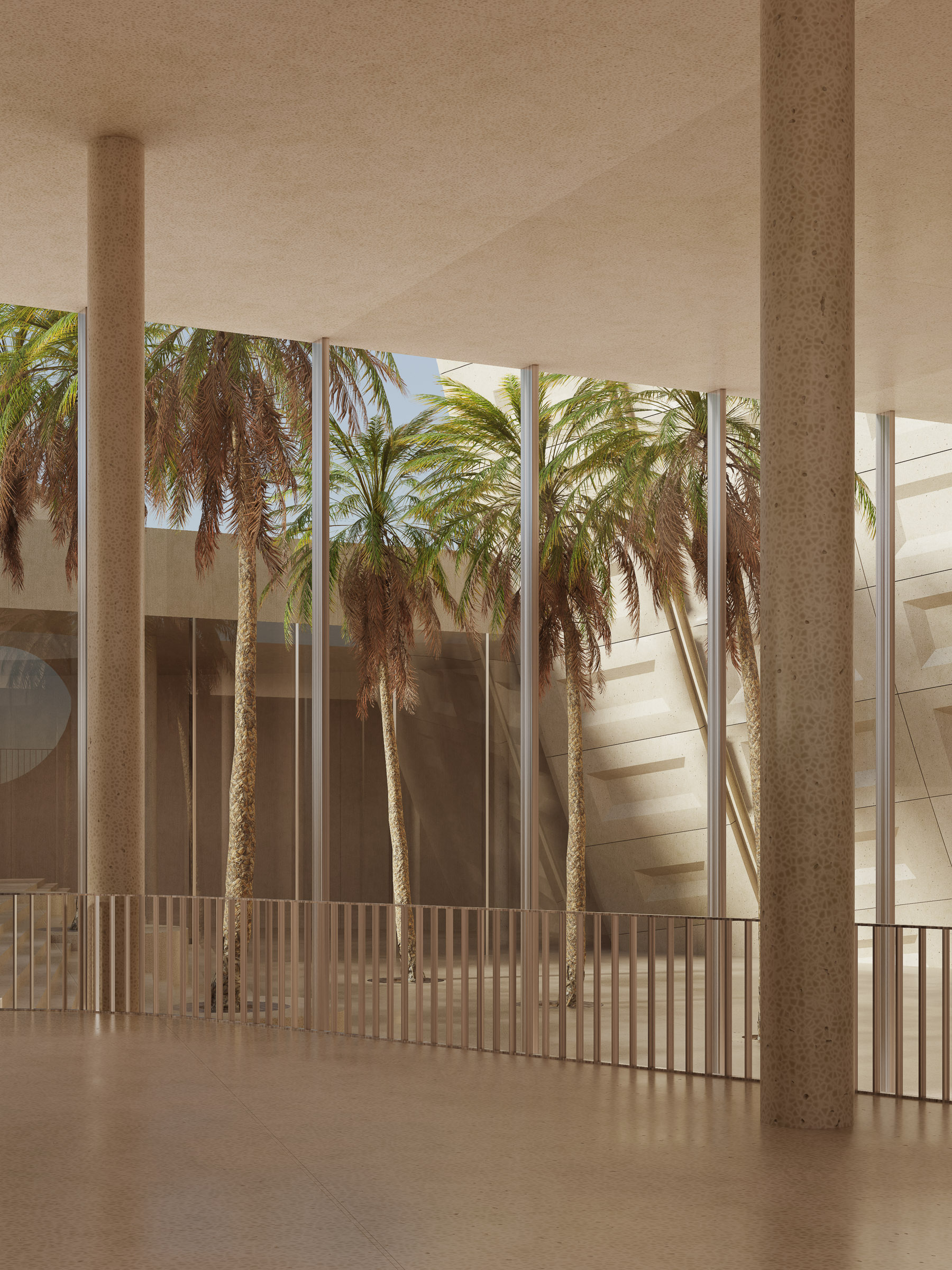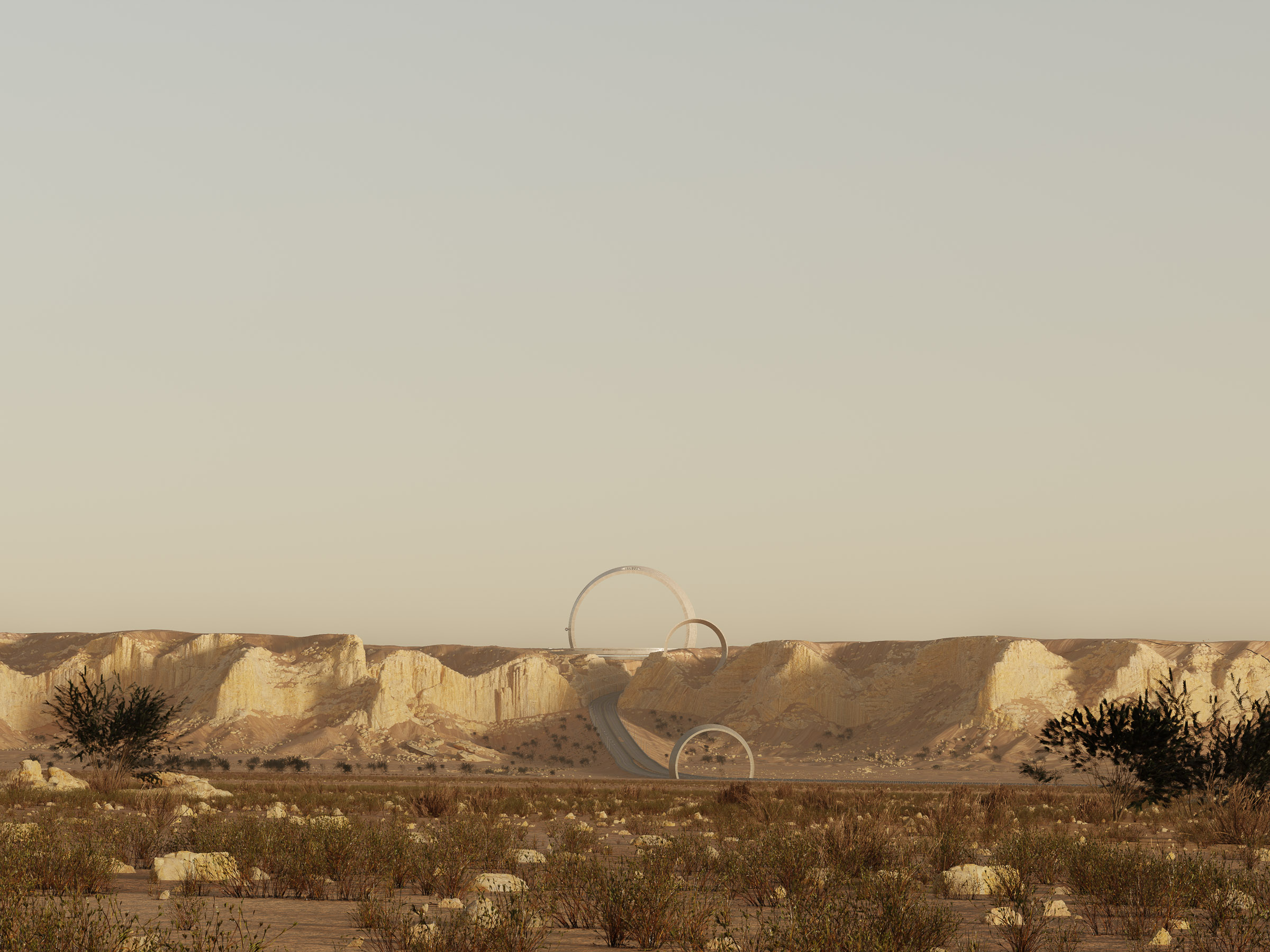The Astrolabe
Riyadh

CONTEXT
Astrolabe was developed for an invited competition commissioned by the Royal Commission for Riyadh City, with support from our partner Squint/Opera. While initially framed as a gateway structure, the studio reframed the brief as a broader spatial and cultural proposition. Positioned at the western edge of the city, the project explores the idea of arrival, proposing the gateway as both a landmark object and a spatial system, a terrain of orientation, reflection, and civic potential.




_Edited%20Color.jpg)
_Edited%20Color.jpg)

DESIGN INTENT
The design draws its conceptual and organisational logic from the astrolabe, a historical instrument used to chart time, space, and celestial position. Its geometry establishes a spatial framework, inscribing circular forms into the desert landscape to create a field of alignments and thresholds. The project avoids monumentality in favour of a layered encounter with territory, cosmology, and civic scale.





RESOLUTION AND OUTCOME
Architecturally, the scheme is composed of cast concrete rings, steel bridges, and textured landforms, calibrated to the site’s topography, views, and solar movement. Embedded programs, including observation platforms, visitor facilities, and shaded walks, are organised within a continuous spatial system. The resulting ensemble is both infrastructural and atmospheric, offering moments of pause and collective orientation within the vastness of the surrounding desert.





